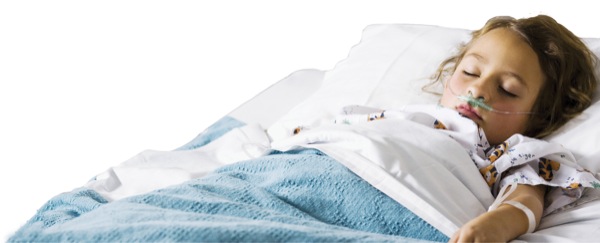The guideline, which was presented during the Society of Critical Care Medicine’s 2020 Critical Care Congress, differs notably from guidelines for adults with sepsis.
“Children are not simply small adults and the signs of sepsis and its treatment differ, so they need to be assessed and managed differently,” said Scott Weiss, MD, an intensivist at Children’s Hospital of Philadelphia and a co-vice chair of the guideline committee, in a statement.
While adult guidelines recommend that all patients are started on antimicrobial therapy within one hour of recognizing sepsis, the pediatric guidelines recommend a more liberal approach with a two-phase process for assessing children suspected of having sepsis.
Kids who have symptoms of septic shock should be placed on antimicrobial therapy within one hour of shock recognition. Those without symptoms of septic shock should be further evaluated to confirm or exclude a diagnosis of sepsis and, if results are positive, started on therapy within three hours of the initial suspicion or sooner if shock develops during the evaluation.
The guideline recommends obtaining blood cultures before antimicrobial therapy if this does not substantially delay treatment. The authors—a multidisciplinary panel of 49 international experts, three methodologists and three public members—called for initial use of broad-spectrum antimicrobial therapy to cover all likely pathogens and narrowing to a more specific therapy once a pathogen has been identified.
The panel stressed that antibiotics should only be used when needed, and children should be reassessed daily and taken off antimicrobial therapy once they no longer have evidence of bacterial infection.
“This helps reduce inappropriate antibiotic use, which has become a global health emergency,” said committee co-chair Niranjan Kissoon, MBBS, the vice president of medical affairs at British Columbia Children’s Hospital and Sunny Hill Health Centre for Children, in Vancouver, in a statement.
While sepsis is more common in adults, 1.2 million children develop the condition globally every year, including more than 75,000 in the United States. Nearly 7,000 American children die of sepsis annually, making it more deadly than pediatric cancer.
Sepsis and septic shock can be difficult to diagnose in children. The majority of kids who have some sepsis symptoms do not have the condition, making early and accurate diagnosis challenging. For this reason, the guideline recommends each institution implement screening and protocols to facilitate timely recognition and treatment in children.
The guideline, published in February in Pediatric Critical Care Medicine (2020;21[2]:e52-e106) and Intensive Care Medicine (2020;46[2020]:10-67), recommends fluid administration be decided based on the resources available in each hospital. Children at hospitals with ICUs should receive up to 40 to 60 mL/kg bolus fluids in the first hour of treatment, based on cardiac output, and discontinued if they exhibit signs of fluid overload. However, health care systems without ICUs may not have the resources to manage fluid overload and should not administer a bolus of fluid unless the child has extremely low blood pressure, the committee advised. In those cases, children should receive maintenance fluids instead.
“This is a substantial departure from the approaches that we use for adults,” said Lewis J. Kaplan, MD, the president of the SCCM and a professor of surgery at the Hospital of the University of Pennsylvania, in Philadelphia.
The guideline also recommends that children receive epinephrine or other vasoactive medication to treat low blood pressure if they continue to show signs of shock despite fluid therapy. Symptoms suggesting warm shock are often unreliable in children and can mask sepsis-induced heart dysfunction.
The Surviving Sepsis Campaign is a joint initiative of SCCM and the European Society of Intensive Care Medicine.

